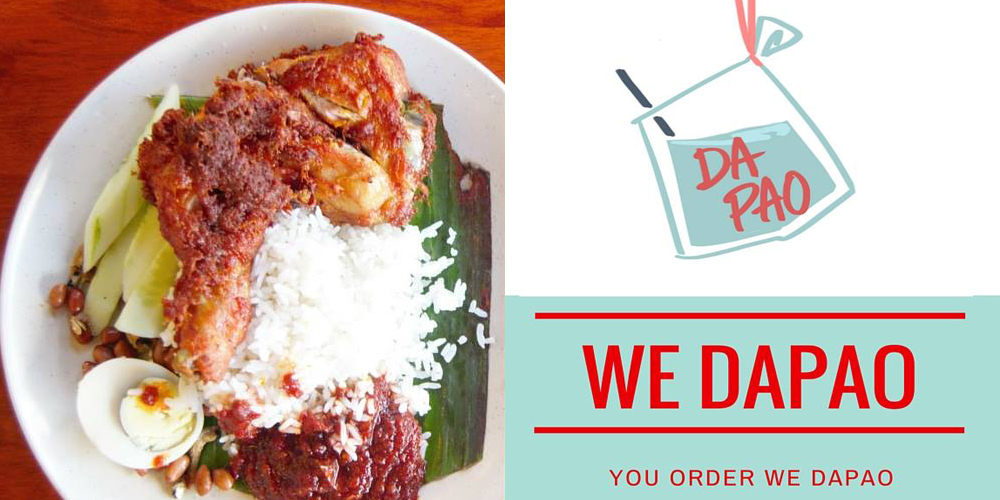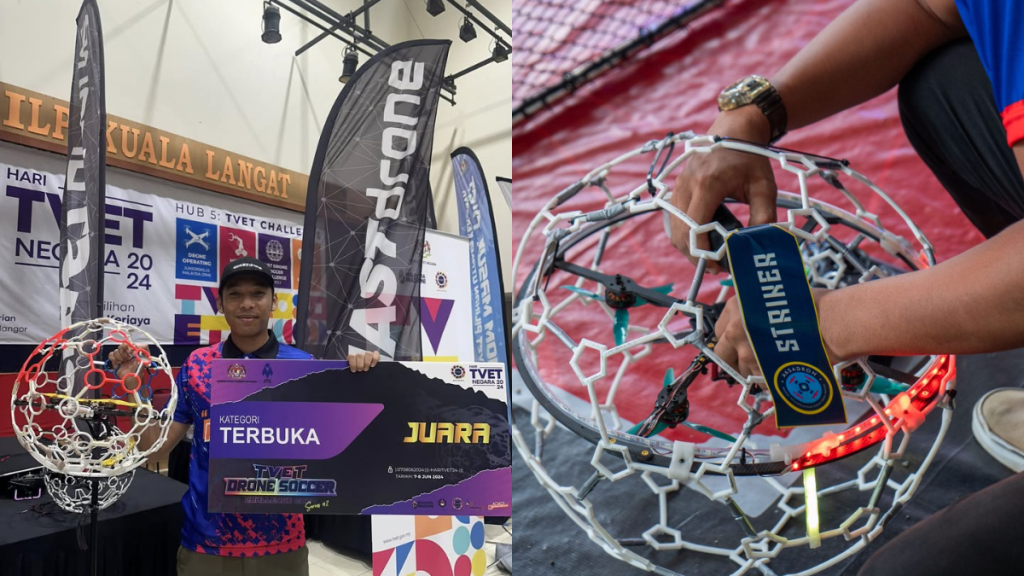What’s the one term commonly heard among Malaysians when you’re out eating at bustling hawker stalls or typical mamak joints?
“Boss, nak dapao satu.”
Despite your race or ethnicity, the word ‘Da Pao’ (or Ta Pau) is something that can be heard frequently when eating out. The term is translated to ‘pack up’ but people use it to takeaway food whenever they prefer to have the food to go.
These three young entrepreneurs decided to use this term as the base of their own delivery service but bring a different selling point to offer Malaysians a diverse menu.
WeDaPao For You
Founder Jin Hui Wong previously worked as an analyst in the research and sourcing sector before he decided he wanted to venture on the pathway towards becoming a full time entrepreneur. He decided to venture into food delivery after he researched to find out what business was currently booming in Malaysia.
He was aware of the tight competition between the food delivery options already available, especially within the Klang Valley region, where big names were already in heavy use by the busy population of Kuala Lumpur. But he realised that most of them merely catered to offering dishes from chain restaurants, so he saw an opportunity there.
It took a total of 3 months for him to persuade his family to agree to him quitting his job and starting this business. He then got two partners on board, Daniel and Ching Wern to start WeDapao about a month ago.
WeDapao is a food delivery model that is designed to serve Malaysians the best food in town with a vision of ‘distance is not a problem for best food’. Their main selling point is the idea that they deliver what most people don’t, which is mostly the kind of food that can be found from Michelin hawker stalls and independent restaurants that are loved by the locals.
Their menu consists of dishes such as the famous Village Park Nasi Lemak, Lim Fried Chicken SS15 and the Nasi Dagang from Capital Damansara, for people to enjoy despite their busy schedules.
“Our vision for this startup is to deliver authentic local food right from the restaurants itself and this is what sets us apart from the rest. Our foods are landmark foods which are well known to the people of Klang Valley, who have always found it difficult to dine in,” said WeDapao.
How It Works

Since WeDapao is still considered fairly new, their resources are limited so they are only able to serve the restaurant’s best dish for customers in Klang Valley. During peak hours is usually the busiest time for all these stalls so they can’t entertain a variety of orders.
So WeDapao makes sure to purchase food during the offpeak hours (10–11AM) and deliver it during lunch hours (11AM–1PM).
“On our website, we have a cut-off ordering time and a fixed delivery hour. This model not only adds value to the restaurant by increasing sales without stressing their kitchen operation during peak hours, but also to our customers by skipping the queue and have it delivered straight to their office or doorstep,” said WeDapao to Vulcan Post.
They are very strict with the cut-off time, as we at Vulcan Post have found. We did try to make an order at 10:05am one day, only to be rejected.
Currently on their website, they only offer one dish per day. The reason being they wanted to create a sense of exclusivity where their customers would only be able to enjoy that certain dish on a particular day.
They also wish to ensure that their standard operation procedure is strict so that they’ll be able to deliver food on time from the restaurant providers to the customers due to the high volume of orders their partnered stores may have.
“Our restaurant providers are usually located far away from our customers in KL/PJ, thus our deliveries are generally long distance deliveries. Having too many restaurants at the get-go will hamper our efforts to ensure consistency in our delivery time to all our customers,” explained WeDapao.
They do hope growing bigger and getting a footing will mean that they’ll be able to incorporate more selections for their customers to choose from after they’ve established a stronger operating system.
It should be noted that although WeDapao offers free delivery for two orders or more, there is a service fee that is embedded into the cost of the food. This means that if you check the prices in the restaurant and the prices on WeDapao’s website, you’ll notice that WeDapao charges more.
The team explained, “Yes, that additional cost is the service charge. Also, we used to just allow free delivery with no minimum orders. But, what if there are 20 meals ordered from 20 different places? With so many locations, we would need more riders to deliver and we would not be able cover the cost.”
Taking this model into consideration, if you’re a large corporation and you order 200 meals, you end up paying the service fee 200 times. This means that if you and 10 colleagues order together, all of you pay that service fee. If you use most other food delivery services, you pay the cost price of your meal and can divide the delivery fee among the 10 of you (often ranging from RM4–RM10).
The Hurdles Of A Delivery Service

The idea of delivering food is always ambitious and Jin was exposed to the burdens almost immediately. He admitted that the idea may seem appealing but there was nothing fancy when you drive your own car and deliver food during the lunch hour in the city of Kuala Lumpur.
When they began receiving orders daily, they realised the troubles that came with it.
With only 2 cars delivering the food in the heart of Klang Valley where traffic is infamous, they faced some problems where the orders were mixed, deliveries delayed and customers were very disappointed because of all this. The delivery time (11AM–1PM) has to be maximised because they sometimes deliver to up to 20 places in 2 hours, with 2 cars.
“I almost felt like quitting when the delivery part was screwed up. I knew it would be hard so I wondered if it was worth the effort. However, the business model proved that there is a strong demand of what we have created. The vision & mission are clear and we have been solving the day-to-day operation problems,” said Jin.
Till now, they have received up to 60 orders of packs per day from their website and they have also managed to receive bulk orders from corporate companies such as Citibank and Evergreen who made an order of 150 packs at one go from them.
In 2 months, they have received more than 200 orders and delivered more than 900 meals in total. In a short time, they’ve also managed to reach out to 4000 foodies with 30% returning customers.
“I made the WeDapao website without any IT background within 2 weeks. I delivered food by myself and saw the challenges. I applied what I have learnt from my previous jobs in the Internet industry.”
“When you are in your own startup, no one will tell you what you should do. They said running a tech startup is a race, not a 100 meter sprint, but a marathon. So I’m glad we persevered and are ready to improve the chances we get,” said Jin.
Right now, WeDapao plans to raise funds and grow their infrastructure to increase the selection of restaurants for their customers.
“We take the hassle of long queues, impossible parkings, and the irritable weather just to deliver these foods to your doorstep be it at your office or your home. By doing so, we’re hoping that people would order food because they want to eat it with their friends rather than ordering foods because they don’t have the time to go out for lunch. As we all know, good food is best eaten with great company,” said WeDapao.
Feature Image Credit: WeDapao














